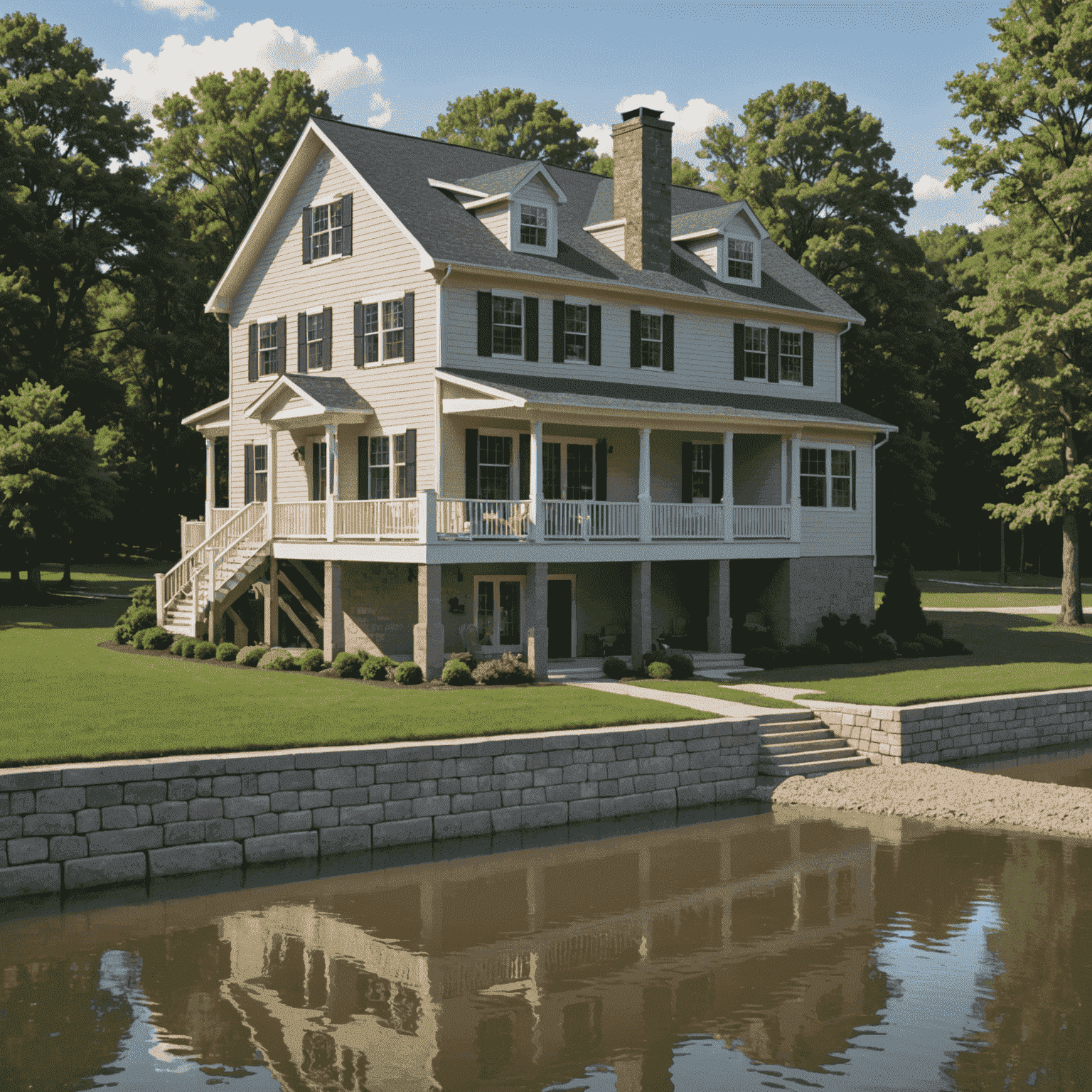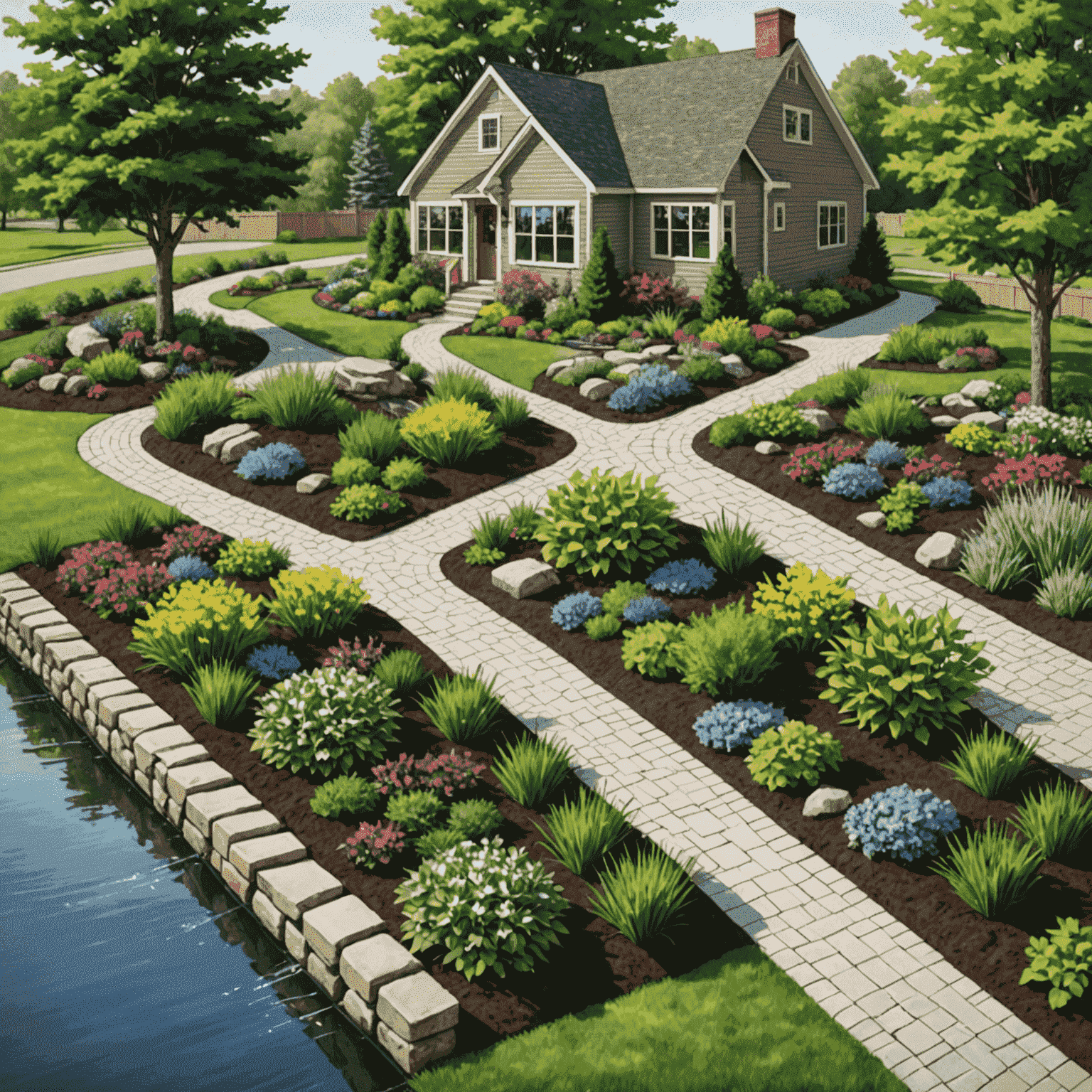Flood Prevention Strategies: Protecting Your Home from Water Damage

Flooding can cause devastating damage to your home and property. By implementing effective flood prevention strategies, you can significantly reduce the risk of water damage and protect your investment. This guide offers comprehensive advice on both immediate actions and long-term planning to safeguard your home against flooding.
Immediate Actions for Flood Prevention
- Inspect and clean gutters and downspouts: Ensure your gutter system is clear from debris and functioning properly to direct water away from your home's foundation.
- Install check valves: Prevent sewage backup by installing check valves on sewer and septic tank connections.
- Elevate electrical components: Raise switches, sockets, circuit breakers, and wiring at least 12 inches above the expected flood level in your area.
- Create a barrier: Use sandbags or install flood shields for doors, windows, and other openings to prevent water entry.
- Maintain a sump pump: Install and regularly test a sump pump with a battery backup system in your basement or crawl space.
Long-term Planning for Flood Protection
- Improve landscape grading: Ensure the ground around your home slopes away from the foundation to direct water flow.
- Install a French drain system: This underground drainage system can help divert water away from your home's foundation.
- Seal foundation fissures: Inspect your foundation regularly and seal any fissures to prevent water seepage.
- Invest in waterproof coatings: Apply waterproof sealants to walls, floors, and foundations in basements and crawl spaces.
- Consider flood-resistant materials: When renovating, use materials like concrete, closed-cell foam insulation, and marine-grade plywood that can withstand water exposure.
Pro Tip: Create a detailed flood emergency plan for your household. Include evacuation routes, emergency contact information, and a checklist of important items to take with you in case of evacuation.
Landscaping Strategies for Water Management
Your yard plays a crucial role in managing water flow around your property. Consider these landscaping techniques to improve drainage and reduce flood risk:
- Rain gardens: Create a shallow depression filled with native plants to absorb and filter rainwater.
- Permeable paving: Use materials like gravel, permeable concrete, or porous asphalt for driveways and walkways to allow water to seep into the ground.
- Strategic planting: Use deep-rooted plants and trees to help absorb excess water and prevent soil erosion.
- Swales: Implement these shallow, vegetated channels to direct water away from your home and into appropriate drainage areas.

Regular Maintenance: The Key to Long-term Protection
Implementing flood prevention measures is just the first step. Regular maintenance is crucial to ensure these systems continue to protect your home effectively:
- Conduct seasonal inspections of your gutters, downspouts, and drainage systems.
- Test your sump pump every few months and before major rain events.
- Regularly check and maintain your landscaping to ensure proper water flow.
- Keep an eye on your foundation and seal any new fissures promptly.
- Update your flood emergency plan annually and practice with your family.
Remember: While these strategies can significantly reduce your flood risk, no method is 100% foolproof. Always stay informed about flood risks in your area and consider flood insurance for additional protection.
By implementing these flood prevention strategies and maintaining them over time, you're taking proactive steps to protect your home and family from the devastating effects of flooding. Stay vigilant, stay prepared, and enjoy the peace of mind that comes with a well-protected home.